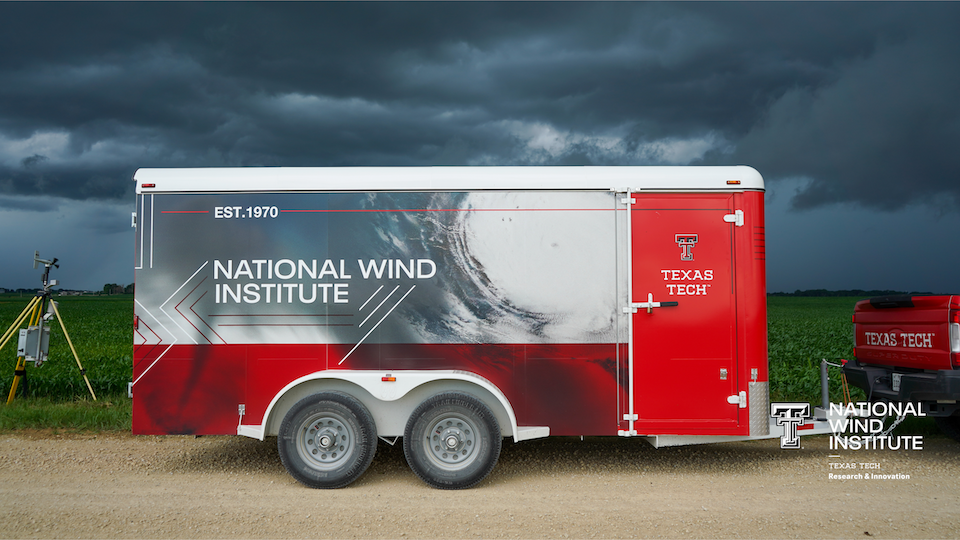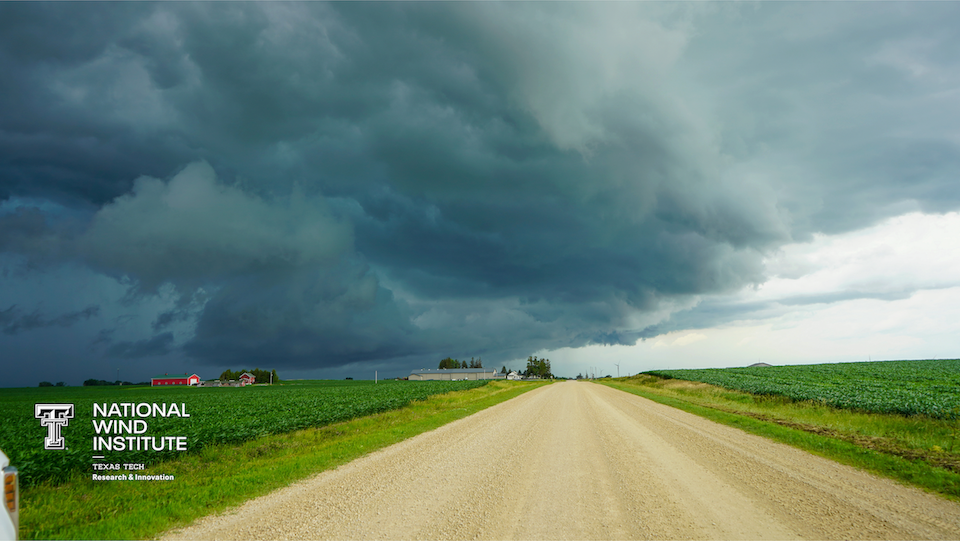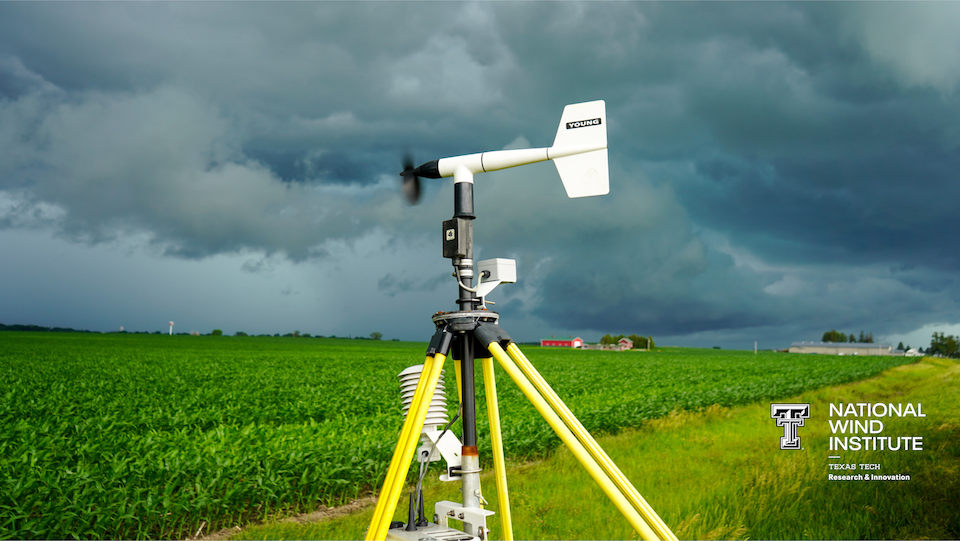National Wind Institute Participates in IBHS Derecho Field Campaign.

In late June, faculty, staff, and students from Texas Tech University hit the road to support a new research project funded by the Insurance Institute for Business and Home Safety (IBHS).
The mission? To better understand how wind transitions from rural to urban areas —
using a combination of ground sensors and mobile radar platforms. The team focused
on derechos, fast-moving and widespread windstorms common in the upper Midwest during
the summer months.

The view of the storm during a deployment.
A three-person IBHS crew, led by PI Jake Sorber (Research Project Scientist at IBHS), deployed a Precipitation Imaging Probe (PIP) tower at key rural-to-urban transition zones.
Texas Tech’s National Wind Institute (NWI), led by Dr. Brian Hirth, contributed 24
StickNet platforms (learn more about StickNet), two Ka-band mobile radars (learn more about our radars), and two sets of newly developed “slow antennas” — lightning-mapping sensors that
attach directly to StickNet units.
 A StickNet during a deployment.
A StickNet during a deployment.
Deploying and operating this suite of instruments took a team of 8: 3 faculty members, 4 staff, and 1 PhD student. Over two weeks, the team logged over 4,000 miles across 8 states and completed 6 successful deployments.
The data collected will help researchers better understand how urban infrastructure
influences surface wind fields — and how evolving wind environments may contribute
to storm damage in different landscapes.
